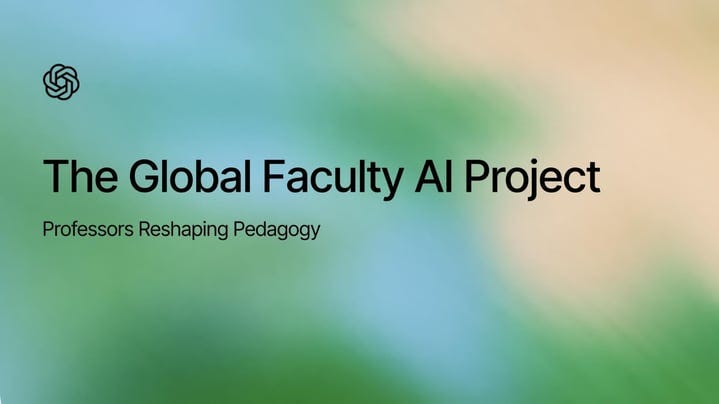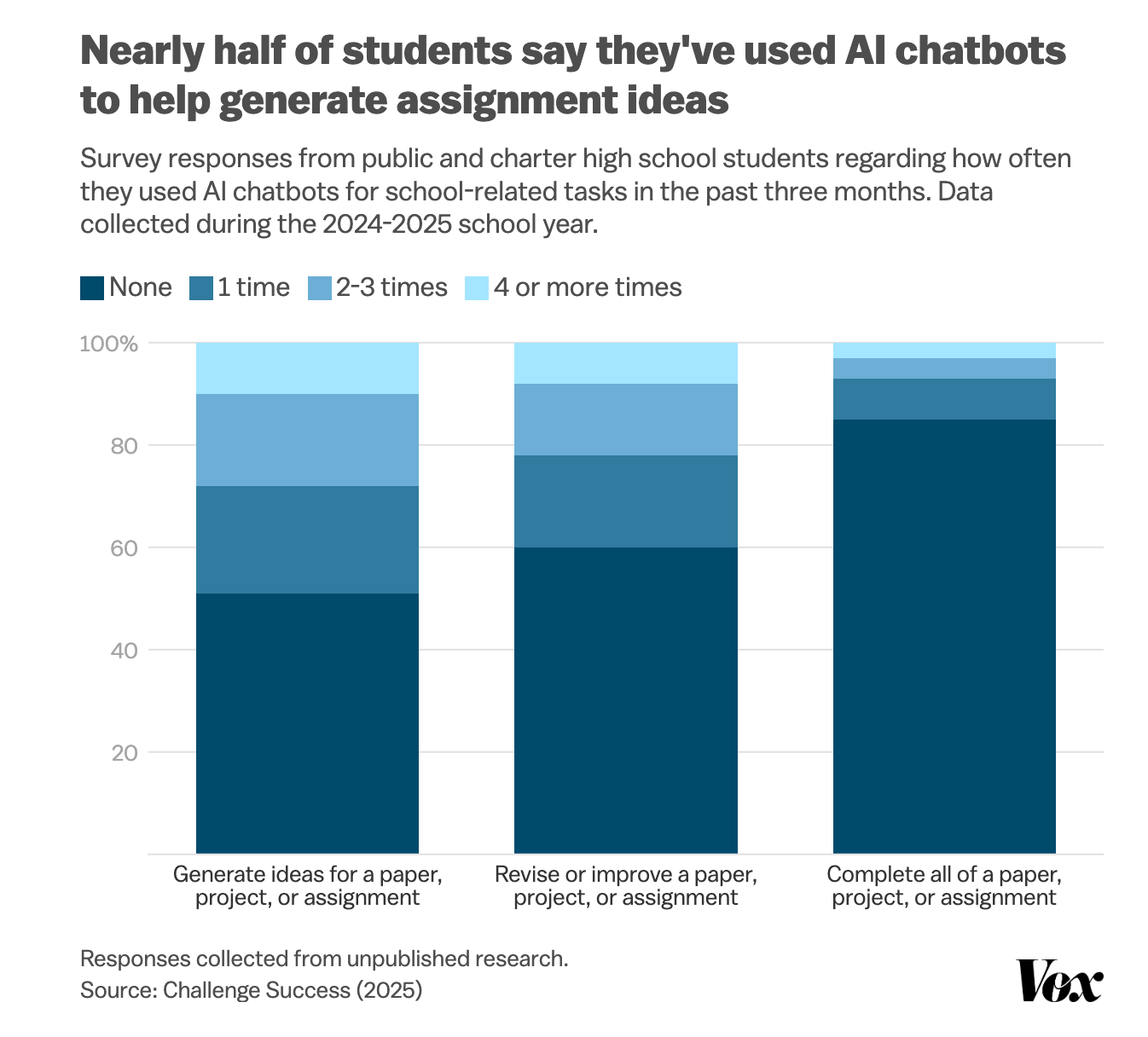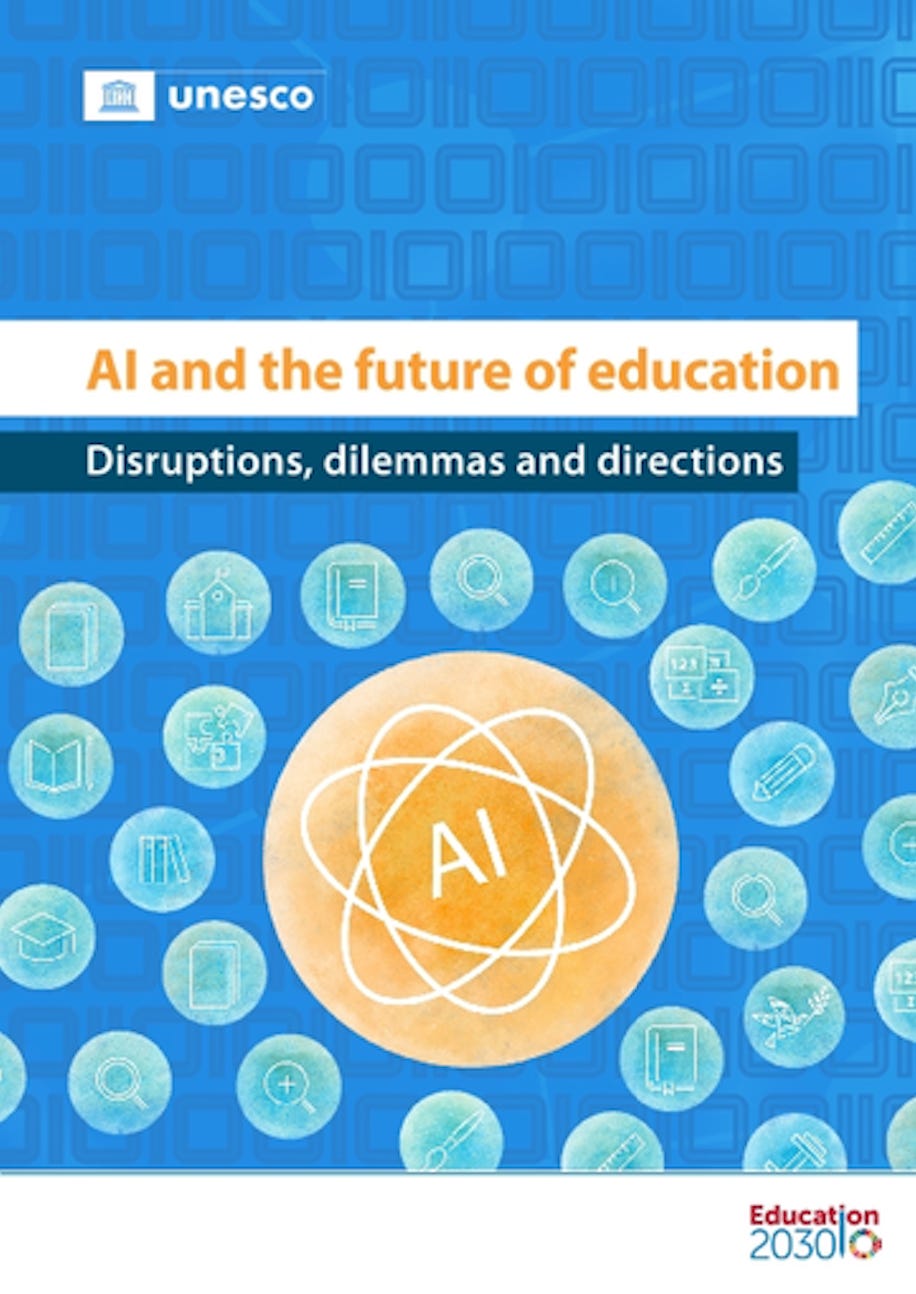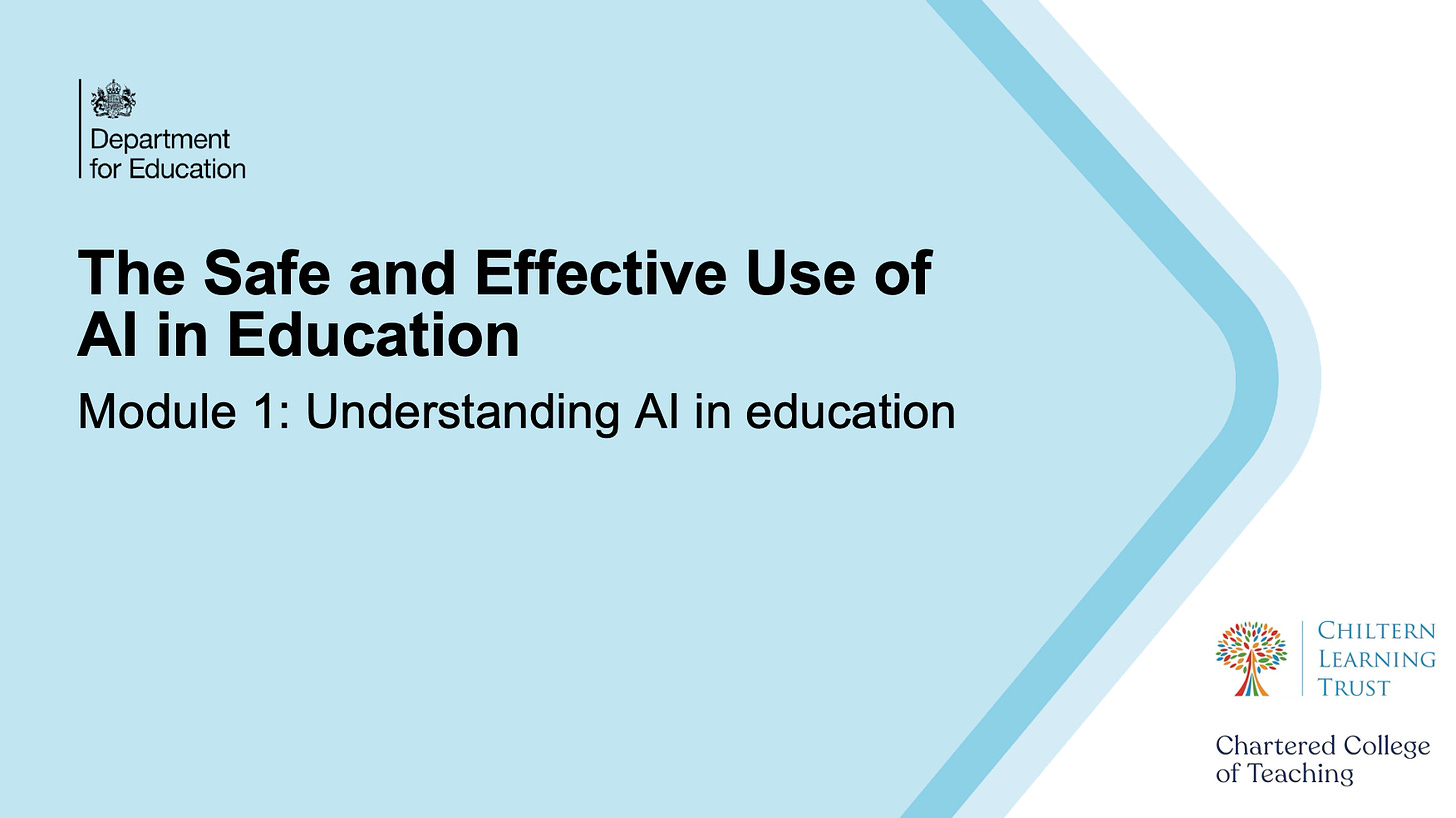Biggest Updates in AI and Education This Week – Sept 8th Edition
Stay up-to-date on how AI is transforming education from student innovations to new insights on teaching, learning, and academic integrity.
Here are the top 10 things you need to know to stay up-to-date in AI in Education today:
1️⃣ The White House recently announced its Presidential AI Challenge, a nationwide competition inviting K–12 students, educators, and community teams to design AI-powered solutions that address real-world problems in their schools or communities.
Participants can enter one of three tracks: Track I (Proposal), where student teams develop a detailed plan for how AI could solve a community issue; Track II (Technical/Implementation), where student teams build and demonstrate a functional AI solution; and Track III (Educator Projects), where educators either create innovative ways to teach AI concepts or design AI-based tools to enhance classroom learning. Projects must be submitted by January 20, 2026, to be recognized with Presidential Certificates and can advance through state, regional, and national levels for awards and prizes.
2️⃣ OpenAI Edu Academy’s Global Faculty AI Project offers a free, open-access speaker series showcasing how professors worldwide are reimagining teaching with AI. More than 300 faculty across 30+ disciplines contributed ways they have incorporated AI into their classrooms, with 89 faculty videos made available to watch and inspire your own teaching.

3️⃣ Inside Higher Ed’s student survey on generative AI offers a snapshot of how college students currently view AI in their academic experience. Findings revealed mixed opinions on faculty use of AI for teaching and highlighted student perspectives on its impact on critical thinking, academic integrity, and more.

4️⃣ In the Atlantic article, “I’m a High Schooler. AI Is Demolishing My Education,” a New York high school senior reflects on how AI is reshaping student life and learning. While tools like ChatGPT can support studying and exploration, the student observes widespread misuse: peers are copying annotations in English class, solving math problems instantly, and bypassing deadlines. These shortcuts, she argues, are eroding academic discipline, collaboration, and critical thinking, even affecting extracurriculars like debate.
5️⃣ Stanford education researcher Victor R. Lee explores what the data really reveals about students using AI to cheat in the Vox article, “I study AI cheating. Here’s what the data actually says.” His research shows that while AI has changed how students cheat, it hasn’t significantly increased the overall prevalence. In high schools, roughly 10-15% of students now submit fully AI-generated work, while many use AI more moderately to generate ideas, revise drafts, or check answers. Lee emphasizes key complexities: students navigate unclear rules, mixed messages from teachers, and pressures from schoolwork and college admissions, and he offers guidance on how educators can adapt and support responsible AI use.

6️⃣ UNESCO’s latest publication, AI and the future of education: disruptions, dilemmas and directions, explores how artificial intelligence is reshaping education worldwide, bringing both opportunities and urgent challenges. While AI is now present in classrooms, access remains deeply unequal, with one-third of humanity still offline and the most advanced systems concentrated in the hands of a few. The report brings together 21 global thinkers to examine the philosophical, ethical, and practical dilemmas of AI in education.

7️⃣ In 2024, the Stanford Accelerator for Learning hosted a symposium and hackathon where teachers and students with disabilities collaborated with AI innovators to develop product prototypes. The ideas and outcomes from the event are summarized in their recent white paper, “AI + Learning Differences: Designing a Future with No Boundaries,” which explores how AI can transform education for learners with diverse needs. The paper highlights nine key areas where AI can make an impact: co-designing with families, enhancing IEPs, identifying needs early, supporting social-emotional growth, expanding assistive technology, improving teacher training, preparing students for work, and fostering life satisfaction.

8️⃣ While tech companies promise that AI will revolutionize education by handling teachers' "grunt work," a new study of 57 teachers across Sweden and Australia reveals a different reality. In the paper, “When the prompting stops: exploring teachers’ work around the educational frailties of generative AI tools,” researchers found that teachers spend considerable time reviewing, editing, and often completely reworking AI-generated content that fails to meet their classroom needs, lacking local curriculum knowledge, misreading student dynamics, or producing generic outputs unsuitable for specific contexts. Rather than saving time, teachers described doing substantial "hidden labor" to make AI tools actually work in real classrooms, challenging industry claims about these technologies being ready to transform education.

9️⃣ Anthropic Academy recently launched free certification courses, including AI Fluency for Students and Teaching AI Fluency. The student-focused course helps learners build practical AI skills that enhance learning, career growth, and academic success through responsible AI use, while the educator-focused course equips faculty, instructional designers, and other instructors to teach and assess AI Fluency effectively in classroom or workshop settings.
🔟 The UK Department for Education offers a collection of free support materials developed by the Chiltern Learning Trust and the Chartered College of Teaching to help schools and colleges use generative AI safely and effectively. The resources include slides, video presentations with transcripts, summaries, quizzes, and more.

🎙️ Perspectives on AI in Education
Meet Richard Tang: He is the founder and CEO of Thinkvas AI, founder of Learnest, a 501(c)(3) nonprofit promoting Responsible AI in Education, and a Data Scientist at Asana. He has 7+ years of AI+education experience across academic research, industry, entrepreneurship, and philanthropic space.
Thinkvas AI is a one-stop visual study space for organizing multi-threaded AI chats with knowledge grounding and notes on one infinite canvas. It’s like Gemini + Figma + Notion, but for nonlinear AI interactions and visual information processing designed specifically for learning contexts. Thinkvas’s vision is to reimagine human-knowledge interaction by creating the next-generation knowledge operating system in the age of AI.
Check out our interview below!
Could you walk me through the inspiration of your product? Why did you decide to create this?
I’ve been following AI education tools and products for quite some time and two main problems that I identified and that a lot of tool providers and builders didn’t solve are that 1) product UI is limited to linear chatbots, and 2) the knowledge grounding is weak, causing AI to be less effective in learning contexts despite improvements..
To start with, the UI aspect of the tools. Most AI tools in education today, like AI tutors or content development tools, still rely on a linear chatbot interface, which I believe is very limited and restraining. Imagine teachers, students, they want branched thinking, ask follow-up questions on some earlier turn of events, or draft another version of the response and then organize their thoughts. Right now it’s all in the linear chat and siloed. The conversation gets too long, you have to restart a new chat, the rich context gets lost, and it is not how people think and work naturally.
On the other hand, the traditional RAG system relies on text chunks and embedding the text chunks in the embedding. That architecture is too coarse for the use case in education and doesn’t have a real knowledge understanding for any user text uploads. In other words, the traditional RAG system is not granular enough and not knowledge-intensive to support a lot of learning and knowledge work use cases. That’s the first issue, which causes AI’s response to be not perfectly grounded and still hallucinates.
If you put those two together, you realize that no matter how powerful the current models get, those issues remain in learning and knowledge work. That is the original inspiration for Thinkvas, where we use AI-extracted knowledge graphs as grounding. We extract knowledge and concepts from user-uploaded documents like study materials, syllabus, textbook, etc., with deep semantic meaning, and a free canvas-style UI where users can organize their thoughts spatially and visually to support their cognitive development and branched thinking along the way. That’s the story behind this tool.
How do you envision this tool being used and who would be the ideal users?
There are a couple of real user stories I want to share with you, and I believe those are high-potential use cases.
The first is case reading in business school. I have a collaborator at Harvard Business School who told me that each semester they have over 150 cases to read, each more than 20 pages. Right now, they typically upload everything to ChatGPT projects and ask rounds of questions to summarize, extract key points, etc. But one pain point is that it’s hard to manage all those conversations, especially when reviewing cases at the end of the semester. Imagine each case with 10 turns of conversation. If you have 150 chats, that’s 1,500 turns. There’s no way to manage that linearly and still remember what you said in the third turn of case 55.
Because they are living in this linearly organized way, they don’t have a good way to see how their class evolves. Some early feedback we received from her classmates was that they love this product. They can take notes on the side, export to PDF, share the canvas with other students, and collaborate. Most importantly, they have a persistent thought space to see how their conversation and ideas evolve from the early questions. When they come back, it’s always there—whether five conversations, 10 conversations, or multiple branches.
The other story is from a middle school teacher in Denver, a special ed teacher, who is developing a curriculum about executive function. She uploads her source documents, then explores the knowledge graph to see interconnections between key concepts. Her words were that she never imagined she could interact with a document like that and see interconnected concepts. She clicked on one concept, saw three related concepts, and said, “Now I’m going to do more research on those three topics to build my curriculum.”
That changed her content development workflow from static note-taking to a multi-dimensional semantic space. She could do more exploration on top of that. I think she’s not the only one who hasn’t had a chance to experience this level of document intelligence and knowledge graph technology. I’m excited about those use cases, in addition to law school, medical school, and research.
And that’s a wrap for this week’s newsletter! If you enjoyed our newsletter and found it helpful, please consider sharing this free resource with your colleagues, educators, administrators, and more.




